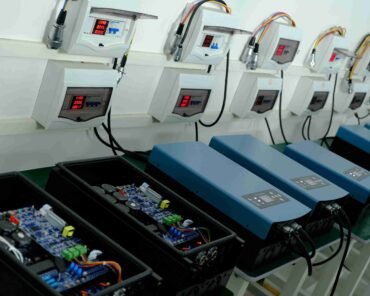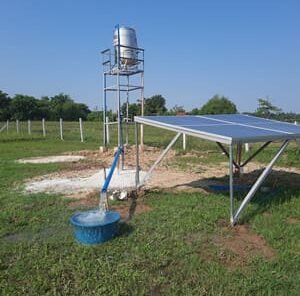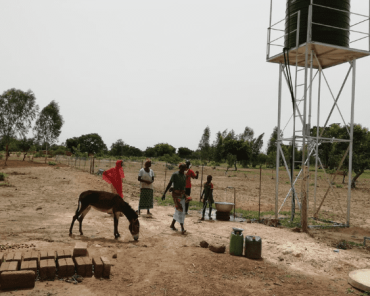Solar water pump irrigation systems are becoming increasingly popular due to their sustainability and cost-effectiveness. Proper maintenance is essential to ensure the longevity and efficiency of your solar water pump system. This article provides top tips to help you maintain your system and keep it running smoothly.

1. Regular Inspection and Cleaning
Why It Matters: Regular inspections and cleaning are crucial to prevent buildup of dirt, debris, and algae, which can block the pump and reduce efficiency.
How to Do It:
Inspection
1. Visual Check:
- Solar Panels: Inspect the solar panels for any visible damage, such as cracks or broken glass. Check for dirt, dust, or debris that might be blocking sunlight.
- Pump and Motor: Look for any signs of wear and tear on the pump and motor. Check for leaks, rust, or corrosion.
- Connections and Wiring: Examine all electrical connections and wiring for signs of fraying, corrosion, or loose connections. Ensure that the insulation is intact.
- Inverter: Inspect the inverter for any physical damage. Check for cracks, discoloration, or signs of overheating.
2. Functional Check:
- Water Output: Measure the water output to ensure it meets the expected levels. A decrease in output may indicate a blockage or mechanical issue.
- System Performance: Monitor the performance metrics provided by the system’s control unit or monitoring software. Look for any anomalies or error codes that might indicate a problem.
- Inverter Status: Check the inverter’s display for any error messages or warning lights. Ensure that the inverter is operating within the manufacturer’s recommended parameters.
3. Filter Inspection:
- Filter Condition: Inspect the filters for dirt and debris. Clean or replace them as necessary. Clogged filters can significantly reduce water flow and pressure.
- Intake Screens: Check the intake screens to ensure they are free from obstructions like leaves, algae, or other debris.
4. Environmental Check:
- Shading: Ensure that no new obstructions, such as growing trees or new structures, are shading the solar panels.
- Structural Integrity: Check the mounting structures for stability. Ensure that brackets, bolts, and supports are secure and not subject to rust or wear.
Cleaning
1. Solar Panels:
- Dust and Debris Removal: Use a soft brush or a microfiber cloth to gently remove dust and debris from the solar panels. For more stubborn dirt, use water and a soft sponge. Avoid abrasive materials that could scratch the panels.
- Frequency: Clean the panels at least twice a year, or more frequently if you live in a dusty area or if the panels accumulate dirt quickly.
2. Pump and Motor:
- External Cleaning: Wipe down the exterior of the pump and motor with a damp cloth to remove dust and grime. Ensure that the cleaning solution is mild and non-corrosive.
- Internal Cleaning: If accessible, clean the internal components of the pump according to the manufacturer’s guidelines. This often requires disassembling parts of the pump, so follow safety precautions.
3. Filters and Screens:
- Filter Maintenance: Remove the filters and wash them with clean water. For stubborn dirt, soak the filters in water with a mild detergent, then rinse thoroughly.
- Screen Cleaning: Clean the intake screens by brushing off any debris. If the screens are heavily clogged, soak them in a cleaning solution and rinse well.
4. Inverter:
- Dust Removal: Gently clean the exterior of the inverter using a dry cloth to remove dust. Avoid using water or cleaning solutions on the inverter.
- Ventilation: Ensure that the inverter’s ventilation openings are free from dust and obstructions to prevent overheating.
- Check Connections: Inspect the electrical connections to the inverter. Make sure they are tight and free from corrosion.
5. Water System:
- Pipe Flushing: Periodically flush the pipes to remove any sediment buildup. This prevents blockages and maintains efficient water flow.
- Reservoir Cleaning: If your system includes a water reservoir, clean it to prevent algae growth and contamination.
Best Practices
- Schedule Regular Maintenance: Set a maintenance schedule and stick to it. Regular inspections and cleanings will prevent minor issues from becoming major problems.
- Document Inspections: Keep a log of your inspections and maintenance activities. Note any issues found and actions taken. This helps track the system’s health over time.
- Use Proper Tools: Ensure you use the correct tools and cleaning materials to avoid damaging the system. Refer to the manufacturer’s manual for recommended tools and materials.
- Safety First: Always follow safety guidelines when inspecting and cleaning the system. Wear protective gear, especially when dealing with electrical components, and work with a partner if possible.
2. Monitor Performance Regularly
Why It Matters: Monitoring the system’s performance helps in early detection of issues, ensuring they are addressed before causing significant damage.
How to Do It:
- Track Water Output: Regularly measure the water output to ensure it meets the expected levels. A sudden drop in output may indicate a problem.
- Solar Panel Efficiency: Use a multimeter to check the voltage and current output of the solar panels. Compare these values with the manufacturer’s specifications.
- System Alerts: Install a monitoring system that provides real-time data and alerts for any anomalies in performance.
3. Protect Against Environmental Factors
Why It Matters: Environmental factors like extreme temperatures, heavy rain, and strong winds can impact the system’s components, reducing their lifespan.
How to Do It:
1. Shielding Solar Panels
Why It Matters: Solar panels are exposed to the elements and can be affected by weather conditions like heavy rain, hail, snow, and extreme heat.
How to Do It:
- Protective Covers: Use protective covers during severe weather conditions to shield panels from hail and heavy rain.
- Angle Adjustment: Adjust the angle of the solar panels to optimize sunlight capture and reduce the risk of snow accumulation.
- Regular Cleaning: Clean the panels regularly to remove dust, dirt, and debris that can reduce efficiency. Use soft brushes and mild cleaning solutions.
2. Ensuring Proper Installation
Why It Matters: Correct installation can prevent damage from wind, water, and other environmental factors.
How to Do It:
- Mounting Structures: Use sturdy, corrosion-resistant mounting structures to ensure that panels and other components remain securely fastened.
- Wind Protection: Install wind deflectors or barriers to reduce the impact of strong winds on the panels and other components.
- Waterproofing: Ensure all electrical connections and components are properly sealed and waterproofed to prevent water ingress.
3. Managing Temperature Extremes
Why It Matters: Extreme temperatures can affect the performance and lifespan of your solar pump system, especially the inverter and battery components.
How to Do It:
- Ventilation: Ensure adequate ventilation around the inverter and battery to prevent overheating. Use fans or ventilation systems if necessary.
- Shading: Install shading devices like canopies or awnings to protect the inverter and battery from direct sunlight.
- Insulation: Use thermal insulation materials around sensitive components to protect them from extreme cold or heat.
4. Preventing Moisture and Corrosion
Why It Matters: Moisture and corrosion can damage electrical components and reduce the efficiency of the system.
How to Do It:
- Waterproof Enclosures: Use waterproof and corrosion-resistant enclosures for the inverter, battery, and other electrical components.
- Dehumidifiers: In humid environments, consider using dehumidifiers or silica gel packs inside enclosures to reduce moisture levels.
- Regular Inspection: Regularly inspect components for signs of corrosion and address any issues promptly.
5. Protecting Against Dust and Debris
Why It Matters: Dust and debris can obstruct the solar panels and clog the pump, reducing efficiency and potentially causing damage.
How to Do It:
- Dust Covers: Use dust covers when the system is not in use, especially in dusty environments.
- Screen Filters: Install screen filters on the pump to prevent debris from entering and clogging the system.
- Routine Cleaning: Schedule regular cleaning sessions to remove dust and debris from panels, filters, and other components.
6. Safeguarding Electrical Components
Why It Matters: Electrical components are vulnerable to damage from environmental factors like rain, dust, and temperature fluctuations.
How to Do It:
- Sealed Connections: Ensure all electrical connections are sealed with waterproof connectors to prevent moisture ingress.
- Cable Management: Use conduit or cable trays to organize and protect electrical wiring from physical damage and environmental exposure.
- Surge Protection: Install surge protectors to shield the system from voltage spikes caused by lightning or other electrical disturbances.
7. Monitoring and Maintenance
Why It Matters: Regular monitoring and maintenance help detect and address issues caused by environmental factors before they escalate.
How to Do It:
- Monitoring Systems: Use monitoring systems to keep track of the performance and health of the solar pump system. Look for any signs of efficiency drops or component failures.
- Scheduled Inspections: Conduct scheduled inspections to check for any environmental damage or wear and tear. Address any issues immediately.
- Professional Servicing: Hire professionals to perform comprehensive maintenance and servicing, especially before and after extreme weather seasons.
Best Practices for Environmental Protection
- Strategic Placement: Install the system in a location that minimizes exposure to environmental hazards while maximizing sunlight exposure.
- Use Quality Materials: Invest in high-quality, weather-resistant materials and components that can withstand environmental stresses.
- Stay Informed: Keep abreast of weather forecasts and take proactive measures to protect the system before severe weather hits.
4. Ensure Proper Electrical Connections
Why It Matters: Faulty electrical connections can lead to system inefficiencies or even failures.
How to Do It:
- Inspect Wiring: Regularly check all electrical connections for signs of wear, corrosion, or loose connections. Tighten and replace as necessary.
- Use Proper Insulation: Ensure all wiring is properly insulated to protect against short circuits and other electrical issues.
- Grounding: Make sure the system is properly grounded to protect against electrical surges and lightning strikes.
5. Perform Routine Maintenance Checks
Why It Matters: Routine maintenance checks help in early identification and resolution of potential issues, ensuring uninterrupted operation.
How to Do It:
- Scheduled Inspections: Follow a maintenance schedule that includes monthly, quarterly, and annual checks.
- Professional Servicing: Hire a professional to perform thorough inspections and maintenance at least once a year.
- Log Maintenance Activities: Keep a detailed log of all maintenance activities, including dates, findings, and actions taken.
6. Keep an Eye on System Updates
Why It Matters: Staying updated with the latest technology and software enhancements can improve system efficiency and reliability.
How to Do It:
- Firmware Updates: Ensure that any firmware or software updates for your solar inverter or monitoring system are installed promptly.
- Technological Advancements: Stay informed about new technologies or upgrades that could benefit your system, such as more efficient solar panels or advanced monitoring solutions.
- Consult Manufacturer: Regularly check with the manufacturer for recommended updates or improvements for your specific system.
7. Plan for Seasonal Changes
Why It Matters: Seasonal changes can affect the performance of your solar water pump system, requiring different maintenance strategies.
How to Do It:
- Winter Preparations: In colder climates, ensure that the system is winterized to prevent freezing damage. This may include draining pipes and using antifreeze solutions.
- Summer Maintenance: In hot weather, ensure the system is well-ventilated and check for signs of overheating or dehydration in the battery (if applicable).
8. Educate Yourself and Your Team
Why It Matters: A well-informed user can better maintain and troubleshoot the system, leading to fewer issues and extended system life.
How to Do It:
- Training: Attend workshops, webinars, or training sessions offered by the system manufacturer or local energy associations.
- User Manuals: Thoroughly read and understand the user manuals and maintenance guides provided by the manufacturer.
- Community Engagement: Join online forums or local user groups to share experiences and learn from others using similar systems.
9. Invest in Quality Components
Why It Matters: Using high-quality components ensures better performance and longevity of the system.
How to Do It:
- Choose Reputable Brands: Purchase components from reputable manufacturers known for their quality and reliability.
- Warranty and Support: Ensure that all components come with a warranty and that the supplier offers good customer support.
- Compatibility: Make sure all components are compatible with each other to avoid inefficiencies and potential failures.
Conclusion
Maintaining a solar water pump irrigation system involves regular inspections, proper cleaning, monitoring performance, and staying updated with technology. By following these tips, you can ensure that your system operates efficiently and lasts for many years, providing sustainable and cost-effective irrigation for your needs. Investing time and effort in maintenance not only maximizes the benefits of your system but also contributes to the broader goal of sustainable water management and energy use.









